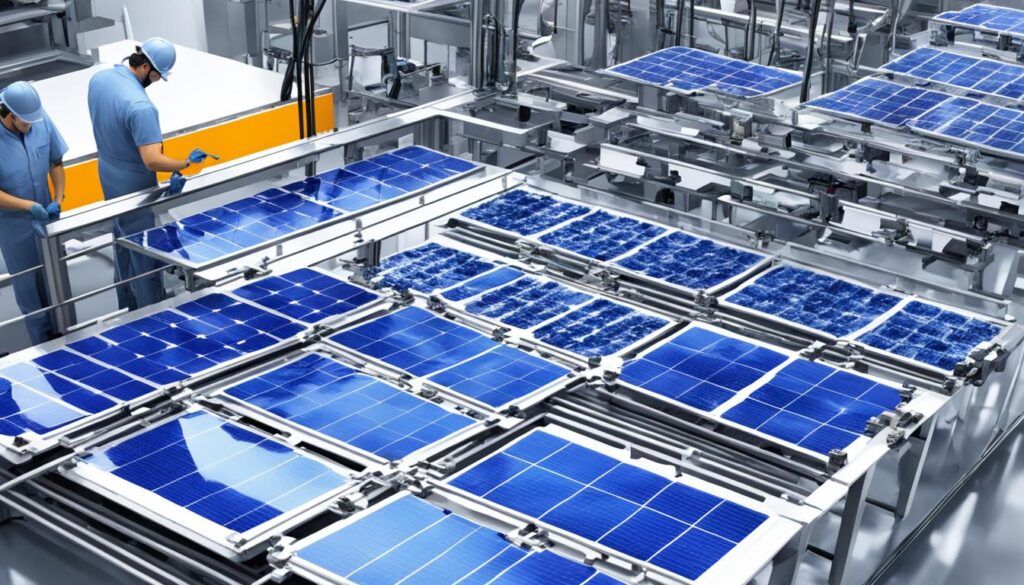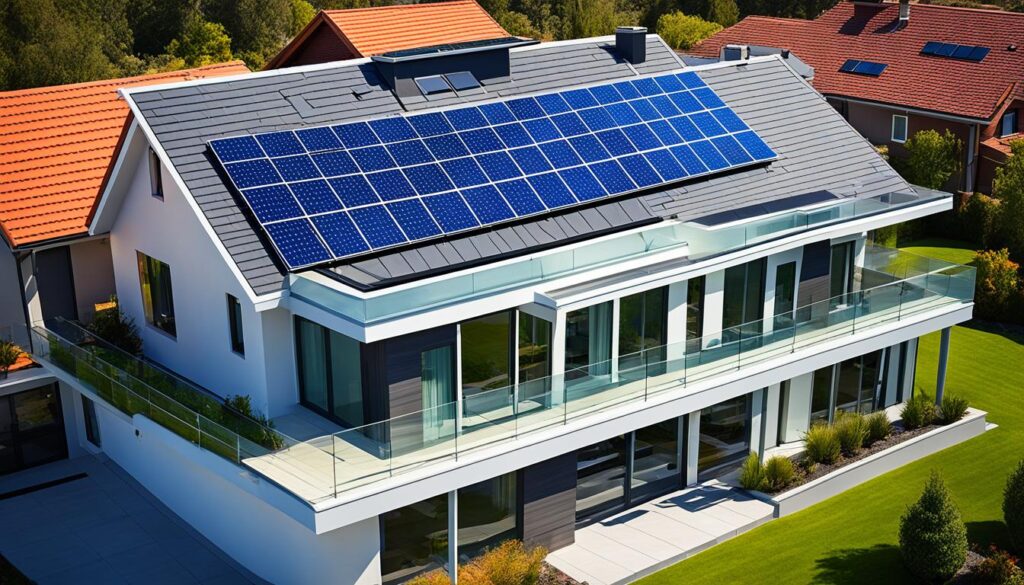India is leading the way in using sustainable energy sources. Polycrystalline solar technology is a key part of this effort. It’s a cost-effective way to use the sun’s energy.
They are changing the energy game in India. They turn sunlight into electricity efficiently. This makes them great for homes and businesses.
These panels are different from others because they’re made of many small crystals. This design boosts their efficiency and makes them cheaper for people in India.
Key Takeaways
- Polycrystalline solar panels offer a cost-effective and efficient solution for renewable energy generation in India.
- The unique cell structure of this solar panels enhances their overall efficiency and makes them a more affordable option for energy consumers.
- As India continues to prioritize sustainable energy solutions, the adoption of polycrystalline solar technology is expected to play a crucial role in powering the nation’s green energy revolution.
- This solar panels are suitable for both residential and commercial applications, making them a versatile choice for a wide range of energy needs.
- The growing popularity of polycrystalline solar in India is driven by its ability to harness the country’s abundant sunlight and contribute to the nation’s ambitious renewable energy targets.
What is Polycrystalline Solar?
It uses the sun’s power to make clean, renewable electricity. It’s different from traditional silicon solar cells because it’s made of many small crystals fused together. This makes it a top choice for homes and businesses.
Understanding Polycrystalline Solar Cells
These solar cell defects have a blue-ish color due to their many crystals. They’re made through polysilicon manufacturing. This process turns molten silicon into ingots, then slices them into thin wafers. The many crystals in each cell help it catch more sunlight, making it more efficient.
But, these cells have some issues like grain boundaries and dislocations. These problems can lower their performance. To fix this, manufacturers work hard to reduce these defects.
The Manufacturing Process
| Step | Description |
|---|---|
| Polysilicon Production | Creating high-purity polysilicon is key for making polycrystalline solar cells. |
| Ingot Casting | Molten polysilicon is turned into ingots, then cut into thin wafers. |
| Cell Fabrication | Polycrystalline wafers become solar cells through doping and metallization. |
| Module Assembly | Solar cells are put together into modules, then framed and sealed. |
Making this solar panels involves many steps. Each one is important for the panel’s efficiency and long life. Knowing how these panels are helps us to value their engineering and benefits.

Harnessing Renewable Energy
Solar technology is widely used in India for grid-tied solar setups. It fits well with the current electrical systems. This lets people, businesses, and communities use the vast renewable energy sources available.
More people are choosing this solar panels because they need sustainable energy for Both homes and businesses use these panels. They help to cut down on the use of fossil fuels. This makes our future cleaner and greener.
These solar tech is key in the push for renewable energy. It lets people and groups control their energy use and help the planet. As more people use grid-tied solar installations and solar power systems, a sustainable future seems closer.
“Polycrystalline solar panels have changed how we view energy. They provide a smart and efficient way to meet our energy needs. They also help make the world cleaner and more sustainable.”
| Benefits of Polycrystalline Solar Technology | Residential Applications | Commercial Applications |
|---|---|---|
|
|
|
The Bright Future of Polycrystalline Solar
The future of polycrystalline solar looks very promising. It can easily fit into grid-tied solar installations and offers reliable, affordable solar power systems. This type of solar is set to be a big part of India’s move to sustainable energy.
Conclusion
It is a key solution for India’s energy needs. It’s cost-effective, efficient, and can grow with the country’s energy demands. This makes it a vital part of India’s shift to renewable energy.
This type of solar panels are great because they both are affordable and perform well. They suit many people, businesses, and government plans. Plus, making these panels is easy, which means more can be made and shared in India.
Investing in this solar tech is important for India’s renewable energy growth. By using this strong and flexible solar option, India can meet its sustainable goals. This will help lower carbon emissions and improve energy security for the future.
FAQ
What are the key features of polycrystalline solar panels?
They are efficient, cost-effective, and reliable. They use multiple silicon crystals. This makes them good at turning sunlight into electricity.
How do polycrystalline solar cells differ from monocrystalline solar cells?
Polycrystalline and monocrystalline solar cells are made differently. These cells use many silicon crystals. Monocrystalline cells use one continuous crystal. This affects their look, efficiency, and price.
What is the manufacturing process for polycrystalline solar panels?
Making polycrystalline solar panels starts with producing polysilicon. This is the main material. Then, polysilicon is melted and turned into square ingots. These are cut into thin wafers, which become solar cells. Finally, these cells are put together into panels.
How do solar cell defects impact the efficiency of polycrystalline solar panels?
Defects in solar cells can lower the efficiency of polycrystalline panels. These defects increase electrical resistance and reduce light absorption. Good quality control during making is key to keep these problems low.
What are the advantages of grid-tied polycrystalline solar installations?
Grid-tied polycrystalline solar setups let people use solar power with the main electrical grid. They can sell extra electricity, lowering bills and helping with renewable energy growth.
How does the efficiency of polycrystalline solar modules compare to other solar technologies?
Polycrystalline modules are less efficient than monocrystalline ones, with about 15-20% efficiency. But, they’re cheaper and easier to make. This makes them a top choice for many solar projects.

